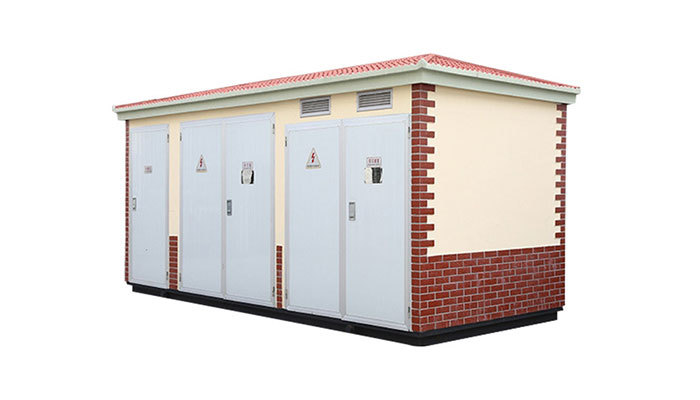The Importance of Testing and Commissioning Low Voltage GCK Switchgear: Ensuring Safety and Efficiency in Electrical Systems
Release time:
2025-04-22
The Importance of Testing and Commissioning Low Voltage GCK Switchgear
Low Voltage GCK switchgear is pivotal in modern electrical systems, ensuring the safe and reliable distribution of power. With the increasing complexity of electrical installations, the need for rigorous **testing** and **commissioning** processes cannot be overstated. This article explores the significance of these procedures, the methodologies involved, and the benefits for organizations looking to maintain operational efficiency and safety.
Understanding Low Voltage GCK Switchgear
Low Voltage GCK switchgear refers to a specific type of electrical switchgear designed to manage and control electrical power distribution at low voltage levels, typically up to 1000V AC or 1500V DC. It serves multiple functions, including circuit protection, switching, and measurement.
Key Components of GCK Switchgear
1. **Circuit Breakers**: These devices protect electrical circuits from overload or short circuits.
2. **Busbars**: Conductors that distribute electricity to various circuits.
3. **Control Panels**: Interfaces for monitoring and controlling the electrical system.
4. **Protective Relays**: Devices that detect faults and subsequently trigger circuit breakers.
5. **Transformers**: Used to step down or step up voltage levels for distribution.
The Role of GCK Switchgear in Electrical Systems
The GCK switchgear plays a critical role in ensuring a stable and secure electrical supply. By effectively managing the distribution of electricity, it minimizes the risk of failures, thus promoting overall operational efficiency. Proper functioning of GCK switchgear is essential for commercial, industrial, and residential electrical systems.
The Necessity of Testing and Commissioning
Testing and commissioning are integral steps in the lifecycle of GCK switchgear. They ensure that the equipment operates according to specifications and complies with safety standards.
Why Testing is Essential
Testing involves a series of procedures to assess the performance of the switchgear. The primary reasons for testing include:
- **Safety Assurance**: Testing helps identify potential faults that could lead to hazardous situations.
- **Performance Verification**: It confirms that the switchgear meets the operational requirements specified by the manufacturer.
- **Regulatory Compliance**: Many jurisdictions require certain testing protocols to ensure compliance with electrical safety standards.
Common Testing Procedures for GCK Switchgear
1. **Insulation Resistance Testing**: Measures the resistance of insulation to prevent electrical leakage.
2. **Contact Resistance Testing**: Evaluates the integrity of electrical connections.
3. **Functional Testing**: Simulates operational conditions to verify the performance of various components.
4. **Temperature Rise Testing**: Assesses the heat generated during operation to prevent overheating.
Commissioning: The Final Step
Commissioning takes place after testing and involves the systematic process of ensuring that the GCK switchgear is installed and configured correctly. This step includes:
- **Final Adjustments**: Making necessary tweaks to ensure optimal performance.
- **Documentation**: Recording all findings and procedures for future reference.
- **Staff Training**: Educating personnel on the proper use and maintenance of switchgear.
Benefits of Rigorous Testing and Commissioning
Implementing thorough testing and commissioning procedures yields numerous advantages:
Enhanced Safety
Ensuring that switchgear functions correctly minimizes the risk of electrical accidents, protecting both personnel and equipment.
Increased Reliability and Performance
Proper commissioning ensures that switchgear operates at peak efficiency, reducing the chances of unexpected failures that could disrupt operations.
Cost Savings
Investing in thorough testing and commissioning can lead to significant cost reductions in the long term by preventing costly repairs and unplanned downtime.
Extended Equipment Lifespan
Regular testing and commissioning can prolong the life of electrical equipment by identifying issues before they escalate.
Best Practices for Testing and Commissioning Low Voltage GCK Switchgear
To achieve the best results during testing and commissioning, consider the following best practices:
1. Develop a Comprehensive Testing Plan
A well-structured testing plan outlines the methodologies, timelines, and responsibilities, ensuring all aspects of the GCK switchgear are evaluated.
2. Engage Qualified Personnel
Employing certified professionals who possess expertise in electrical systems guarantees that testing and commissioning are conducted properly.
3. Utilize Advanced Testing Equipment
Investing in high-quality testing tools and equipment enhances accuracy and reliability in testing results.
4. Maintain Detailed Documentation
Keeping thorough records of testing and commissioning activities aids in future maintenance and regulatory compliance.
5. Schedule Regular Follow-Up Tests
Routine testing and maintenance checks help ensure ongoing reliability and performance of the switchgear.
Challenges in Testing and Commissioning Low Voltage GCK Switchgear
While critical, the testing and commissioning of GCK switchgear can present challenges:
1. Complexity of Electrical Systems
As electrical systems grow more intricate, the testing and commissioning process can become more complicated, requiring more robust procedures.
2. Time Constraints
Organizations may face pressure to minimize downtime, which can lead to rushed testing and commissioning processes.
3. Evolving Standards and Regulations
Staying updated with changing regulations can be challenging but is crucial for compliance and safety.
FAQs About Testing and Commissioning Low Voltage GCK Switchgear
What is the main purpose of testing GCK switchgear?
The primary purpose is to ensure safety, verify performance, and achieve compliance with regulations.
How often should GCK switchgear be tested?
Testing frequency depends on usage and regulatory requirements, but it is advisable to conduct tests annually or after significant maintenance.
What are the consequences of not commissioning switchgear?
Failure to commission can result in operational inefficiencies, safety hazards, and increased maintenance costs.
Can testing and commissioning be done simultaneously?
While they are often separate processes, certain aspects can be conducted simultaneously, provided a structured plan is followed.
Who is responsible for the testing and commissioning process?
Typically, it falls to electrical engineers or certified specialists experienced in the operation of GCK switchgear.
Conclusion
In conclusion, testing and commissioning are indispensable for ensuring the safe and efficient operation of Low Voltage GCK switchgear. By adhering to best practices and addressing potential challenges, organizations can enhance safety, reliability, and performance in their electrical systems. The implementation of rigorous testing protocols not only safeguards operations but also contributes to the longevity and operational efficiency of the equipment, ultimately leading to significant cost savings and peace of mind. As the demand for reliable electrical systems continues to grow, prioritizing these essential processes is crucial in maintaining the integrity of electrical installations.
Latest information
Get a Free Consultancy
If you have any suggestions, please leave a message or send an email to us.

















